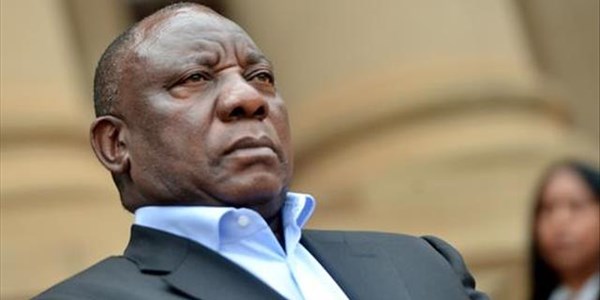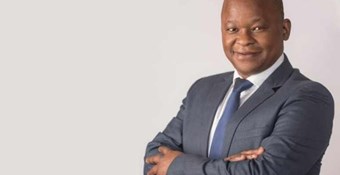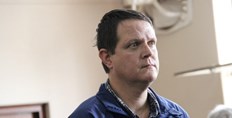South Africa
#CoronavirusSA: Steps taken to procure Covid-19 diagnostic supplies─── 05:45 Mon, 01 Jun 2020

Moves are afoot to secure coronavirus (Covid-19) diagnostic supplies, including 30 million testing kits, 10,000 ventilators, and 80 million masks per month for the African continent from China.
This, according to South African President and current African Union chairman Cyril Ramaphosa.
South Africa's move to Covid-19 alert level 3 from June 1 marked a significant shift in government's approach to the disease, from lockdown to intensive public health management, he said in his speaking notes prepared for his virtual engagement with members of the South African National Editors’ Forum (Sanef) on Sunday afternoon.
"With the assistance of various governments, companies, and foundations, we have been able to mobilise significant quantities of personal protection equipment [PPE], other medical supplies, and ventilators. Our attention has not been limited only to South Africa, but have been working with other leaders to ensure that Africa has the resources it needs," he said.
"I have been in discussion with President Xi Jinping of China to secure diagnostic supplies, including 30 million testing kits, 10,000 ventilators, and 80 million masks per month for our continent. We continue to work with partners to import material when supplies are short. This week, we will be receiving a supply of one million masks from Huawei.
"We are working to grow local production through our work with different industries in the country and through the support we are providing through the IDC [Industrial Development Corporation], National Empowerment Fund and others. Companies across the country have repurposed some of the production capacity to supply the country with alcohol for hand sanitisers, face shields and masks, ventilators and other essential medical supplies.
"As you would be aware, our approach to this pandemic has been informed by the view from the scientific community that most South Africans are likely to be infected by the virus at some point," Ramaphosa said.
While the overwhelming majority would have no symptoms or only mild symptoms, a small proportion of people would develop severe symptoms and need hospitalisation, and for some of them the virus could be fatal. South Africa's strategy had been to prevent a massive spike in infections by delaying the rate of infections, and to simultaneously prepare the health system for the anticipated surge in cases and put in place broader public health interventions, he said.
During the lockdown, the "curve" had started to flatten, with confirmed cases now doubling every 12 days nationally, as opposed to every two days at the start of lockdown. There had been a recovery rate of about 52 percent so far. But the Western Cape had, so far, been hardest hit, accounting for about 65 percent of all confirmed cases, and the doubling time was nine days.
"It is of the utmost importance that we reduce the rate of spread in the Western Cape and we do everything possible to prevent other parts of the country from following a similar trajectory," Ramaphosa said.
South Africa's fatality rate of 2.1 percent was far lower than the global average of 6.4 percent and the European average of 8.5 percent. The priority now was to ensure sufficient health system capacity to provide life-saving care to those who may need it.
"In the coming weeks, we should expect an exponential rise in cases, and we need to deploy all the means at our disposal to continue to flatten the curve. We have strengthened our public health interventions. As people return to work, school, and study, we will be significantly expanding the screening effort to all places where people congregate. However, with such a high proportion of asymptomatic cases, we need to complement screening with a range of other preventative measures. We also need to be more targeted in our testing due to the severe global shortage of test kits and supplies."
Guided by the modelling that had been done on the trajectory of the disease, government had been working hard to expand the capacity of health facilities. To date, over 27,000 beds in the public sector had been allocated to Covid-19 patients, and the field hospitals currently being constructed would have around 13,000 beds.
Special interventions would be made in hotspots. Dedicated, multidisciplinary teams would be deployed to contain the outbreak, including epidemiologists, doctors, nurses and community health workers. Each hotspot would be linked to testing and quarantine facilities, and additional hospital beds where necessary. There would be a close focus on tracing contacts and isolating them to prevent further transmission
"Originally, the intention was to place hotspot areas at a higher alert level than other areas, but it became evident that this was going to prove impractical and would undermine our efforts to re-open the economy. Having different areas at different alert levels would disrupt supply chains, create a multiplicity of regulations to enforce and may even increase the movement of people between hotspot and other areas."
If it became necessary, and all the other hotspot interventions failed to contain the spread of the virus, some hotspot areas may be placed on a higher alert level.
"Our economic strategy going forward will require a new social compact among all role players – business, labour, community and government – to restructure the economy and achieve inclusive growth. Among other things, we will accelerate structural reforms, promote localisation and industrialisation, repurpose state-owned enterprises, and strengthen the informal sector."
A key driver of this recovery would be a massive infrastructure build and maintenance programme that mobilised public and private resources on a significant scale. Another focus would be a massive employment drive that would involve resetting public employment initiatives, among other things, the expansion of current programmes like the National Youth Service, Community Works Programme, and the Presidential Youth Employment Intervention.
"The weeks ahead will be crucial and will require great vigilance, caution and effort from all South Africans. From the experience of the last three months – from everything we’ve gone through, everything that we’ve achieved and all the hard lessons we have learnt – I am convinced that we will succeed in overcoming this pandemic," Ramaphosa said.
African News Agency













